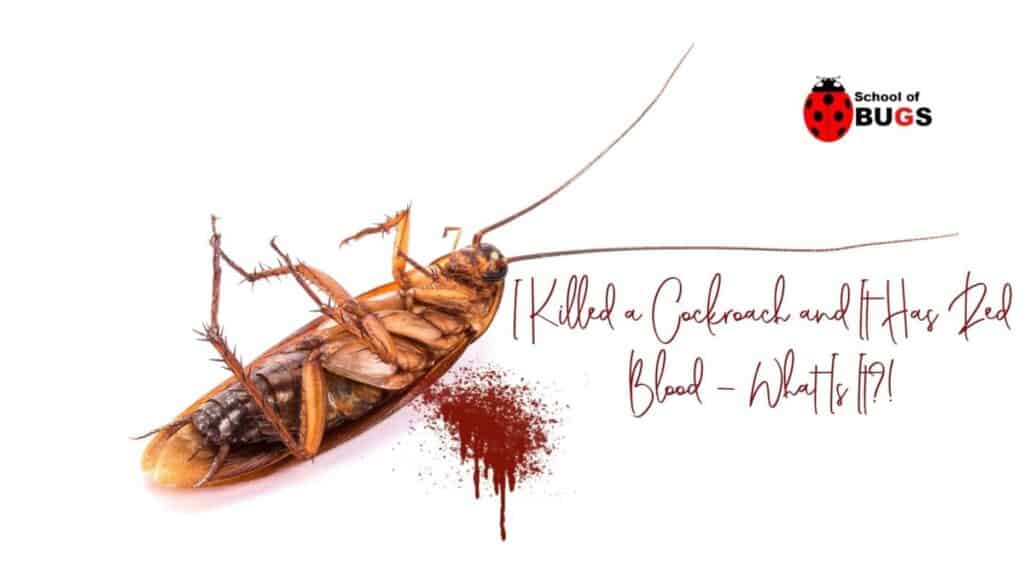
Killing a cockroach isn’t the most pleasant thing in the world, for either you or the cockroach.
When a cockroach dies, especially from being stomped, it usually emits a yellow and/or white goop, which is what constitutes the roach’s blood supply.
So what does it mean if you stomp the roach and it bleeds red?
If you see red blood coming from a dead cockroach, what you’re seeing is probably not red but orange.
It’s not often that you will see the orange either, but it is caused by the vitellogenin in a female roach’s bloodstream necessary for providing nutrients to her young.
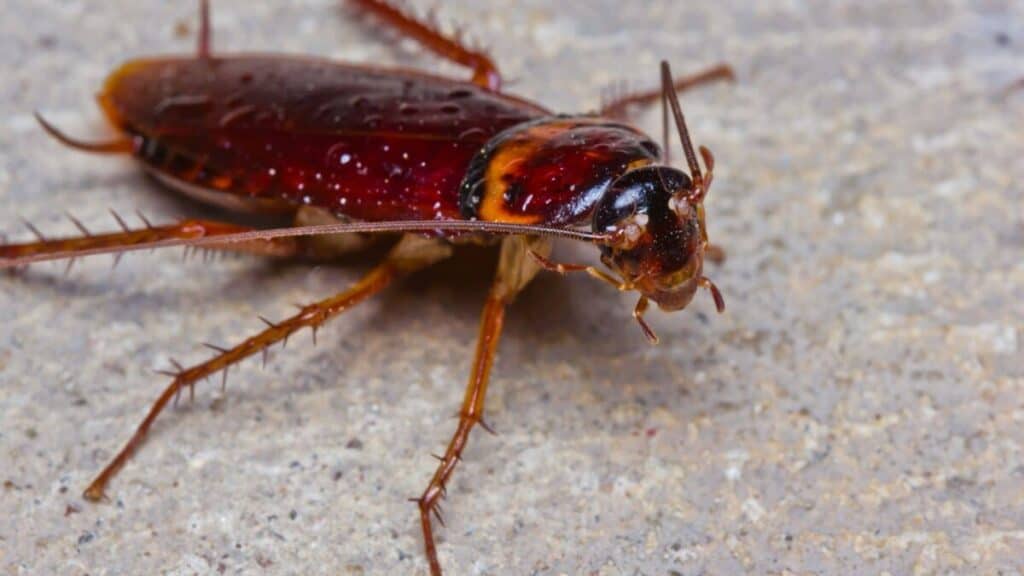
The truth is, a roach should never bleed red. Anything resembling “red” blood would have to come from the above-mentioned vitellogenin.
This substance in itself is relatively uncommon except for that crucial period when a female cockroach is carrying around her ootheca, which houses the eggs.
What is a Cockroach’s Blood Made Of?
The liquid that circulates within a roach’s body is known as hemolymph and its comprised of almost 50% water, with the addition of some salts and other, organic compounds that are all colorless (more or less).
This is why it looks like a clear, yellowish, or white liquid when a roach bleeds.
Since roaches don’t have hemoglobin, as humans do, their blood will never be red in color and the closest that it can get to that is through vitellogenin, which the female roach only carries as she’s going through the egg-laying phase.
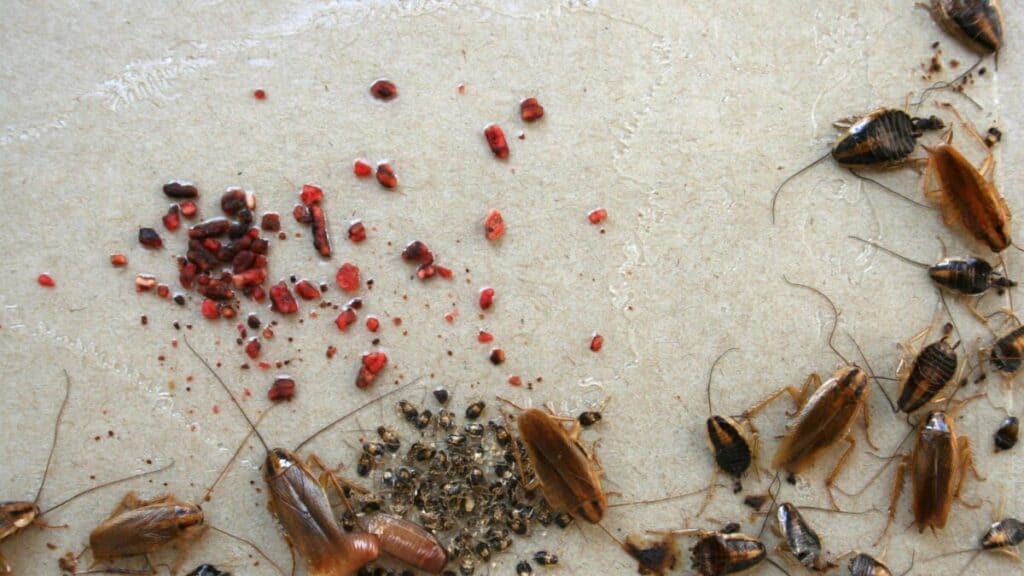
Once her eggs are laid within the safety of the ootheca, her blood returns to normal.
There are three types of cells in a roach’s blood supply:
- High numerical membrane cells
- Cells with vacuoles
- Cells with limited tubule membrane
These cells are largely colorless or white, contributing to the relatively colorless roach blood.
Humans have white blood cells and when you have a pimple or an infection, it will often discharge pus, which is an accumulation of white blood cells that have converged on the bad bacteria.
Just think of a Roach’s blood supply as being filled with cells that are, like white blood cells, colorless or white themselves.
A cockroach’s blood supply isn’t even technically blood, as the system by which its oxygen is transported to the cells is an entirely respiratory system. This is known as a cockroach’s tracheal system.
The “blood” in a roach’s system is responsible for the transportation of proteins, among other things, such as boosting a roach’s immune system, transporting and holding water, ridding the roach’s body of waste materials, and transporting nutrients other than protein.
Do Cockroaches Bleed?
We all have a habit of comparing things to ourselves, mostly because it is the one thing on the entire planet that each and every one of us is intimately familiar with and more knowledgeable about.
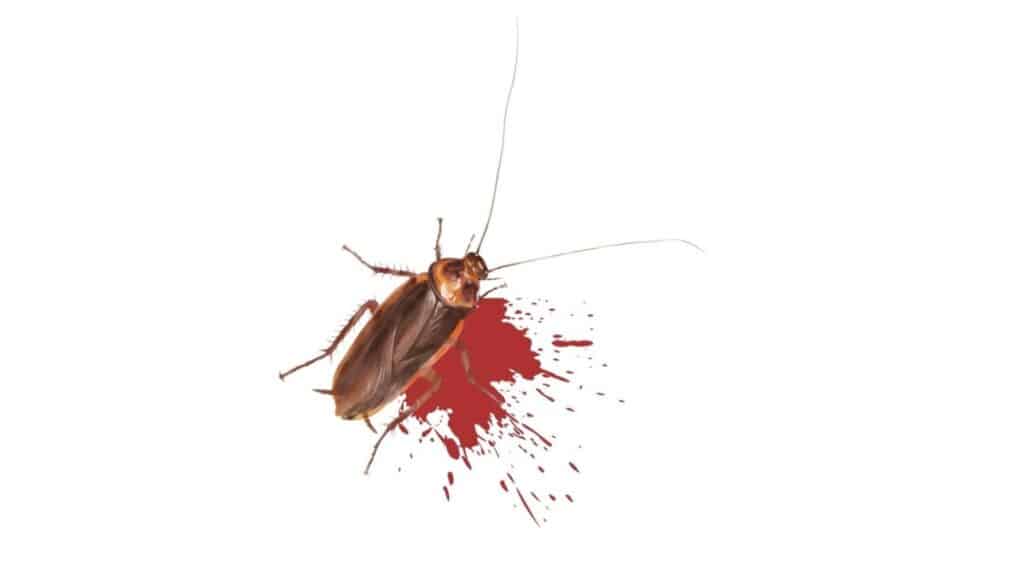
That’s why a roach can seem so alien and we consider things such as the idea of a roach “bleeding.” Roach doesn’t bleed.
If you cut one of its legs off, there might be some fluid there but it won’t continue to leak or push blood from the open wound.
Cockroaches have what is called an “open circulatory” system. They also don’t have a circulatory system in the sense that there is a source that pushes blood throughout their system.
Humans have a heart, whereas cockroaches don’t and their blood essentially rests inside their organs and inner tissues.
An open circulatory system is essentially a system where the blood supply is infused into the organs and can be moved around as a side effect from different organs going through their functions.
For instance, a cockroach’s blood supply is moved around primarily by the digestive system.
As it digests food, the movement and energy from the digestion process move the blood supply around within the roach’s body.
It sounds kind of disgusting but it’s not as if a cockroach could get any more disgusting anyway. It’s also a fascinating example of how things worked differently in other biological systems.
In truth, you should be thankful that cockroaches have an open circulatory system. If they had a closed system, like ours, then they could grow to epic proportions, resembling an insect right out of the prehistoric era.
Is Cockroach Blood Harmful to Humans?
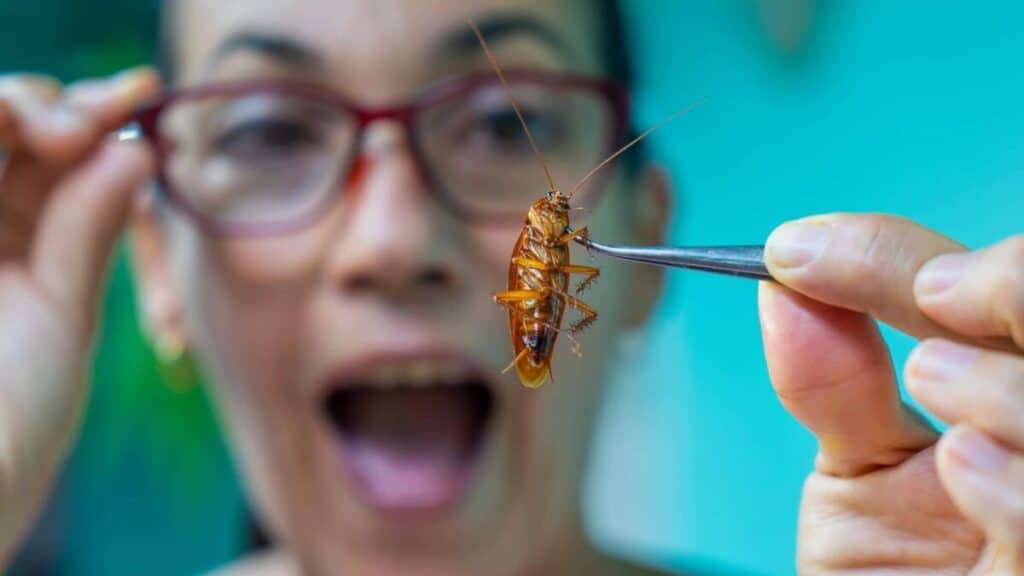
It’s not necessarily the blood that is harmful to humans (although that doesn’t mean that you should go ingest it), but it’s the “allergens.” Allergens are proteins found in cockroach saliva, feces, and blood.
Since these allergens are all over the roach’s body, they can’t be linked directly to their blood, however, the allergen itself certainly exists.
Cockroaches also carry over 30 bacteria that are known to cause moderate to severe illness, such as E. Coli and salmonella and none of this includes the parasitic worms that infect roaches and are easily spread around by contact and accidental ingestion.
Of course, the only way to combat this walking disease on six legs is to keep it and all of its friends out of your home and kill the ones that slip through the cracks (so to speak).
- Go throughout your home or apartment with a caulking gun
- Check all of your pipes for leaks
- Check and seal all of your dry goods and exposed foods
- Place all of your exposed fruits and vegetables in sealed containers
- Check over your water heater for leaks
Roaches won’t come near any of your food or water if you make it so that they don’t have access to it.
Roaches only want the same things that you want, which are food, water, and shelter to prived safety and a place to breed.
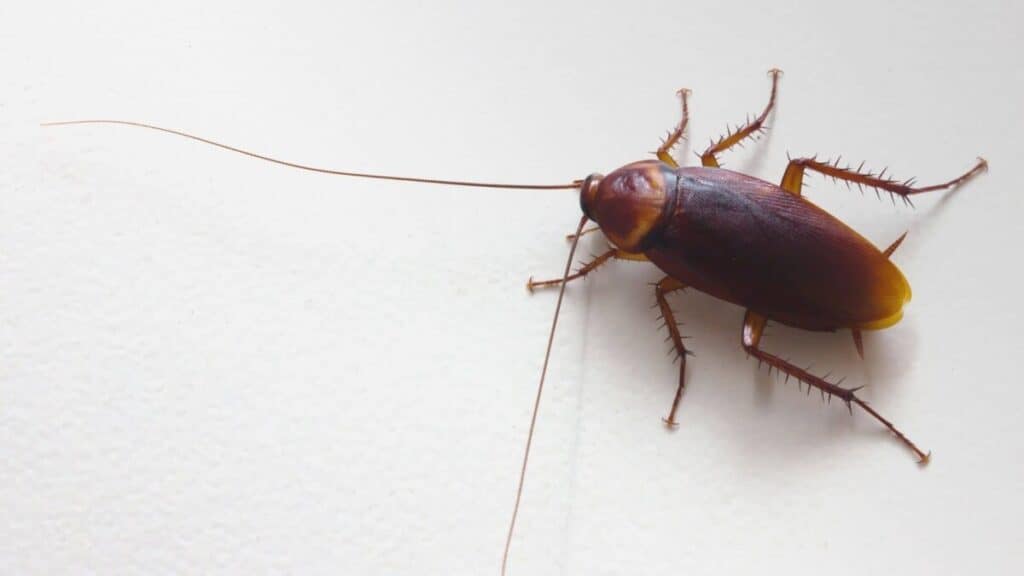
Eliminate the water by checking for leaks throughout your home, especially underneath cabinets and around the water heater. Any place where water can potentially pool up is going to be suspect.
Dry goods are especially attractive to roaches and this is the primary vector for the disease they leave behind.
Ensure that all of your dry goods are in a sealed container and completely inaccessible to cockroaches.
Exposed fruits and vegetables are included. Bananas are a prime example of the types of fruits or vegetables that are often left out in the open.
All a coach has to do is crawl over it and once you pick it up, the parasites or disease are now on your fingers.
Since you are eating a banana, it’s entirely possible to touch the fleshy fruit beneath, and now the roach’s leavings are in your mouth and soon to be inside your stomach.
It may sound disgusting, but it’s true, and it’s a primary example of what can happen if you don’t deal with roaches immediately.
Are White Roaches a Result of Their Blood?
It kind of is. While many people might associate a white roach with an albino variation; a mutant of the species, that’s not normally the case.
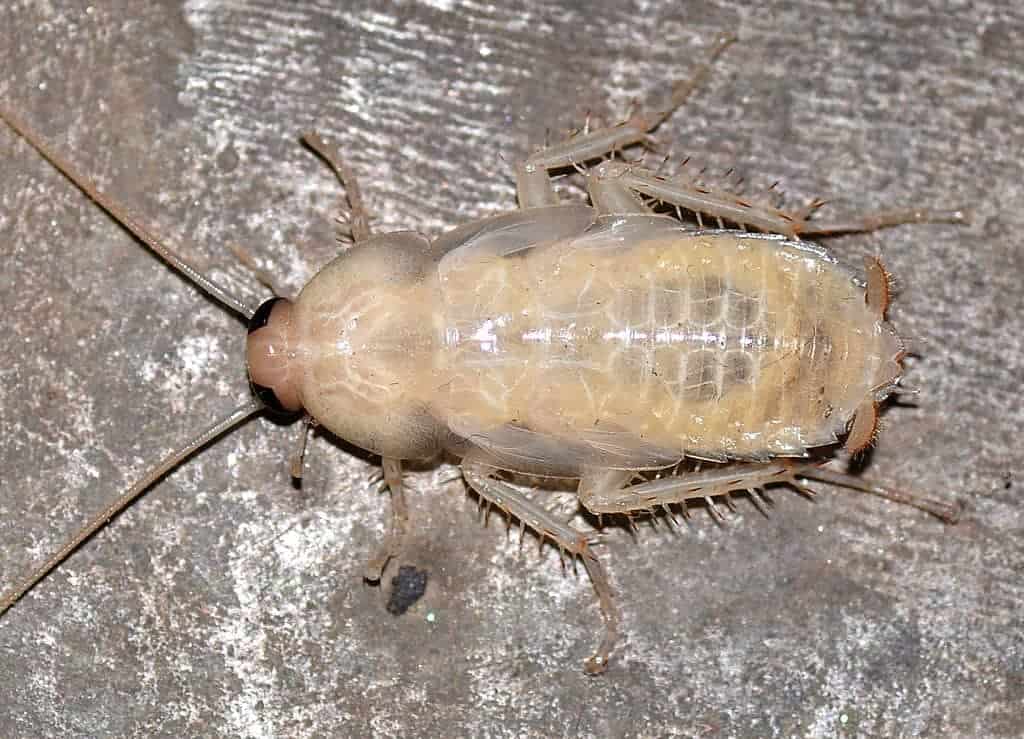
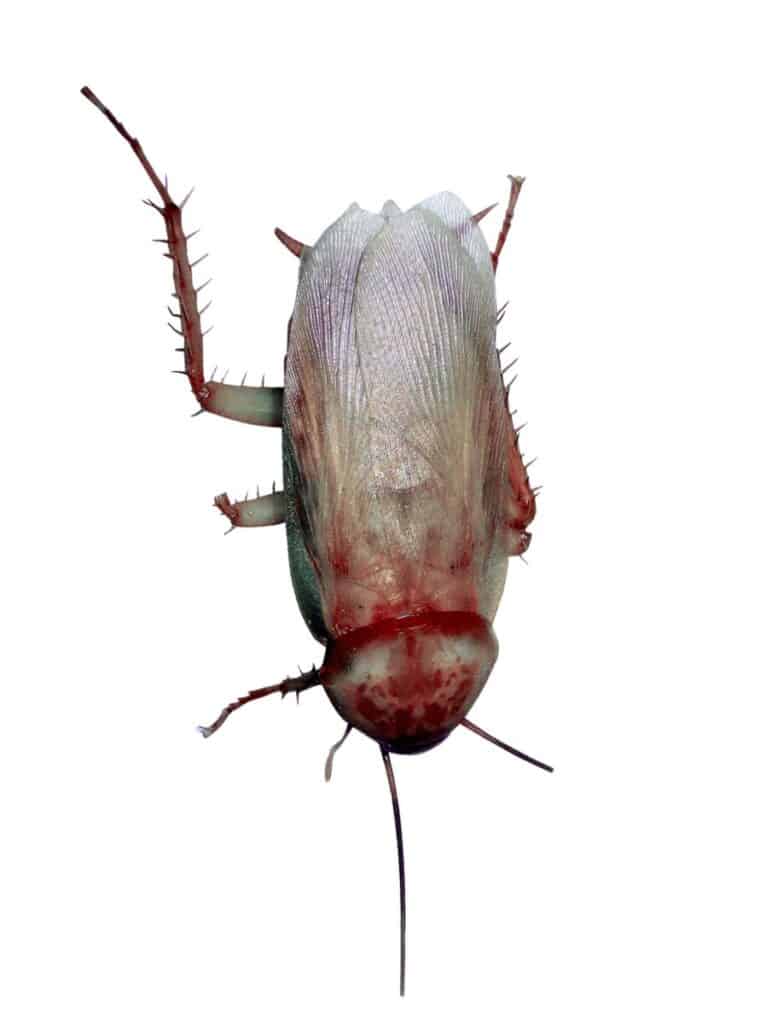
There are several things in a cockroach’s blood supply, but nothing new, exciting, or worth writing home about.
- Proteins
- Amino Acids
- Glycerol
- Lipids
- Carbohydrates
- Water
Aside from some other, unnoteworthy organic and inorganic compounds, that pretty much sums up the “complex” supply of blood, shifting beneath the hard exoskeleton of the cockroach.
All roaches, regardless of their type or size, contain hemolymph, which is their version of blood. It also happens to be the type of blood found in beetles and several other arthropods.
Baby cockroaches also have plenty of white stuff running through them.
In fact, newly hatched cockroaches are more blood than anything else. Even if you stomp on a roach and seemingly nothing comes out doesn’t mean that there is none of the stuff in there.
Roaches have a higher or lower level of hemolymph at varying times of their lives.
Sometimes they can carry as much as 50% of their body in the form of hemolymph, tightly compressed beneath the brown shell of their exoskeletons, or as low as 20% when they are particularly dehydrated or getting old.
Either way, all roaches have hemolymph or blood, if you choose to call it such.
Final Thoughts
If you have ever had the unfortunate circumstance of killing a roach and seeing red, take heart. You most likely just killed a female, along with all of the eggs in her ootheca.
So you probably ended up killing far more than just a single roach and that’s always a good thing.
Alright, that’s it for this article, here are a few hand-selected articles that you might also find interesting reads:
Should You Kill a Roach if You See One? Things to KnowDoes Lysol Kill Roaches? The Facts And Results
What would happen if I swallowed a live cockroach by mistake
Recent Posts
Tiny Black Bugs in Bathroom NO WINGS: What They Are and What to Do!
Finding tiny black bugs in your bathroom can be uncomfortable, to say the least. Especially if they are persistent, or they appear in very large numbers, which they often like to do. When it...
Tiny Black Bugs in Plant Soil - What Are They & What To Do About It
A short horror story: You get a new houseplant. You do your best to take care of it. You’ve ensured that it has the right soil, the right amount of sun, it gets enough water. And then one day, you...

